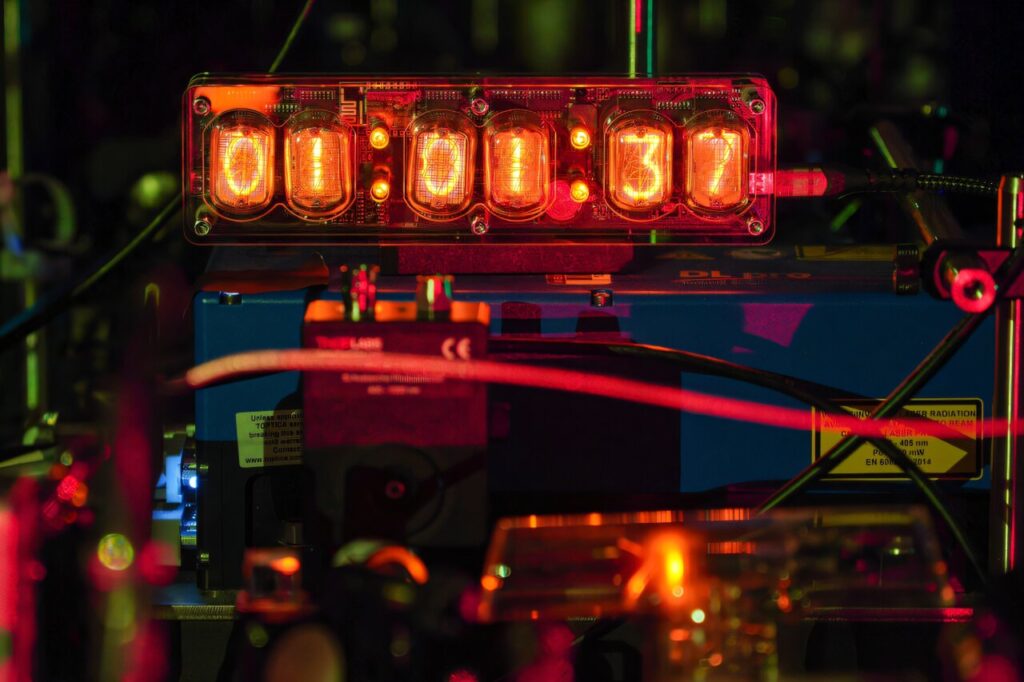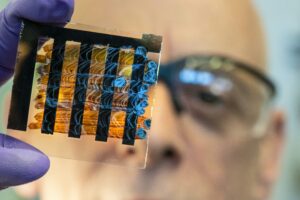
Every time you check the time on your phone, make an online transaction, or use a navigation app, you are relying on the precision of atomic clocks. These clocks keep time by tracking the “ticks” of atoms, which naturally oscillate at stable frequencies. Modern atomic clocks typically use cesium atoms, which tick over 10 billion times per second, tracked precisely with lasers oscillating at microwave frequencies.
In a groundbreaking development, MIT physicists have improved the stability of optical atomic clocks by reducing “quantum noise,” a fundamental measurement limitation due to quantum mechanics that obscures the atoms’ pure oscillations. The team also discovered that a clock’s laser effect on atoms, previously considered irrelevant, can further stabilize the laser. This advancement promises to double the precision of optical atomic clocks, potentially enabling portable versions for diverse applications.
Advancements in Atomic Clock Technology
Scientists are working on next-generation atomic clocks that use faster-ticking atoms like ytterbium, tracked with lasers at higher optical frequencies. If stabilized, these optical atomic clocks could track time intervals up to 100 trillion times per second. The recent MIT study, published in the journal Nature, outlines a method called global phase spectroscopy, which harnesses a laser-induced “global phase” in ytterbium atoms, amplified through a quantum technique.
The research team, including Leon Zaporski, Qi Liu, Gustavo Velez, Matthew Radzihovsky, Zeyang Li, Simone Colombo, and Edwin Pedrozo-Peñafiel, envisions this clock-stabilizing technique could one day enable portable optical atomic clocks. Such clocks could be transported to various locations to measure phenomena ranging from dark matter and dark energy to fundamental forces and even earthquake predictions.
“With these clocks, people are trying to detect dark matter and dark energy, and test whether there really are just four fundamental forces, and even to see if these clocks can predict earthquakes,” says study author Vladan Vuletić, the Lester Wolfe Professor of Physics at MIT. “We think our method can help make these clocks transportable and deployable to where they’re needed.”
Quantum Entanglement: A Key to Precision
In 2020, Vuletić and his colleagues demonstrated that an atomic clock’s precision could be enhanced by quantumly entangling the clock’s atoms. Quantum entanglement allows particles to behave in a collective, highly correlated manner, redistributing noise or uncertainty in measuring the atoms’ oscillations to reveal a clearer “tick.”
During their earlier experiments, the team induced quantum entanglement among several hundred ytterbium atoms, cooled and trapped in a cavity formed by two curved mirrors. A laser, bouncing thousands of times between the mirrors, interacted with the atoms, causing the ensemble to entangle. This showed that quantum entanglement could improve the precision of atomic clocks by reducing noise between the laser’s and atoms’ tick rates.
However, the team was initially limited by the ticking instability of the clock’s laser. In 2022, they developed a method to amplify the difference in laser versus atom tick rates using “time reversal,” a technique involving entangling and de-entangling atoms to boost signal acquisition.
Applying Time Reversal to Optical Clocks
In their latest study, the researchers applied their time reversal approach to optical atomic clocks. By sending in a laser oscillating near the optical frequency of the entangled atoms, they found that the laser inherits the atoms’ ticking, provided it remains stable.
The team discovered they could enhance an optical atomic clock’s stability by exploiting a phenomenon previously deemed inconsequential. When light passes through entangled atoms, it causes them to jump in energy and then return to their original state while retaining memory of the round trip.
“One might think we’ve done nothing,” Vuletić explains. “You get this global phase of the atoms, which is usually considered irrelevant. But this global phase contains information about the laser frequency.”
In essence, the researchers realized the laser induced a measurable change in the atoms, with the magnitude of this change depending on the laser’s frequency. This insight allowed them to amplify the difference between the laser frequency and the atomic transition frequency above quantum noise.
“Ultimately, we are looking for the difference of laser frequency and the atomic transition frequency,” co-author Liu says. “When that difference is small, it gets drowned by quantum noise. Our method amplifies this difference above this quantum noise.”
By applying this new approach, the team was able to double the precision of their optical atomic clock, resolving nearly twice as small a difference in optical frequency without hitting the quantum noise limit. This breakthrough could simplify the operation of atomic clocks, making them more stable and transportable.
As atomic clock technology continues to evolve, the implications of these advancements extend beyond timekeeping. From fundamental physics research to practical applications in navigation and communication, the enhanced precision and portability of atomic clocks could revolutionize numerous fields.





